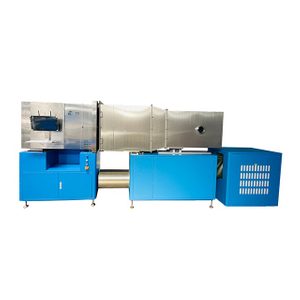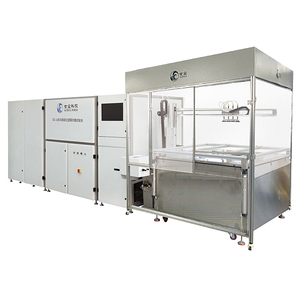1. How many different efficiency?
Efficiency is an key indicator of air filters, it reflects the air filter's ability to filter contaminants.
MPPS efficiency, counting efficiency, gravimetric efficiency, fractional efficiency, particulate matter efficiency, initial efficiency, minimum efficiency, integral efficiency, local efficiency etc. Add up to a dozen efficiencies, which efficiency should we really be concerned about? What is the significance of each efficiency?
2. Definition of counting efficiency and gravimetric efficiency?
Let's start by taking a look at the two main categories of efficiency, counting efficiency and gravimetric efficiency. These two categories, from the test medium to the measuring device for aerosols or test dust are completely different.
2.1 Counting efficiency (definition from ISO 29463-2)
Expression of that proportion of the particles of detectable size suspended in the volume flow under analysis that make their way through the measured volume and are counted by the particle counter.
Counting efficiencies use oil or salt aerosols, with a particle counter as the measuring device.
2.2Arrestance (gravimetric efficiency) Ai (definition from ISO 16890)
Measure of the ability of a filter to remove mass of a standard test dust from the air passing through it, under given operating conditions.
The gravimetric efficiency uses A2 dust or mixed dust, with an electronic scale as the measuring device.
So, of all the kinds of efficiencies mentioned above, which are counting efficiencies and which are gravimetric efficiencies?
3. Which efficiencies are counting efficiencies and their definitions?
3.1 MPPS efficiency
MPPS efficiency, which is the efficiency of an air filter for aerosols of the most penetrating particle size, is a counting efficiency.
EPA, HEPA, and ULPA filters should test this indicator according to EN 1822 and ISO 29463. For H group and U group air filters, both integral MPPS efficiency and local MPPS efficiency need to be tested. For E group air filters, only integral MPPS efficiency need to be tested.
So what are the integral efficiency and local efficiency definitions, respectively?
The integral (overall) efficiency is to ensure that with aerosol uniformity, one sampling probe upstream and one sampling probe downstream, test the aerosol concentration in the upstream and downstream ducts, respectively, and then calculate the efficiency or penetration of the entire filter. A filter has only one overall efficiency value. The local efficiency is tested in the process of scanning leakage detection, testing the filtration efficiency of a certain area of the filter against aerosols, a filter will have more than one local efficiency value.
3.2 Fractional efficiency
It is specify the ability of an air cleaning device to remove particles of a specific size or size range.
Fractional efficiency is a term unique to ISO 16890 and is an indicator that needs to be tested for filters for general ventilation. A 12-channel measuring device is required. However, in terms of measurement method and result display, the fractional efficiency and MPPS are similar, except that one is for general ventilation filter media or filters and the other is for high-efficiency filter media or filters.
3.3 Particulate matter efficiency ePMx
Efficiency of an air cleaning device to reduce the mass concentration of particles with an optical diameter between 0,3 µm and x µm.
From EN 779 to ISO 16890, the classification of filters for general ventilation has changed considerably, both in terms of filter classes and classification methods. ISO 16890 uses ePMx classification, which divides filters into ePM coarse, ePM 1.0, ePM2.5, and ePM10. EN 779 uses filter efficiency@0.4μm classification, which classifies Filters are categorized into groups G, M, F, classes G1-G4, M5-M6, F7-F9.
4. Which efficiencies are gravimetric efficiencies and definitions?
4.1 Average arrestance (EN 779)
Ratio of the total amount of loading dust retained by the filter to the total amount of dust fed up to final test pressure drop.
4.2 Initial arrestance (initial gravimetric efficiency) (ISO 16890)
Ratio of the mass of a standard test dust retained by the filter to the mass of dust fed after the first loading cycle in a filter test.
5. Several special efficiencies
Why are they special?
Although they are counting efficiencies in terms of how they are measured, they need to be tested at different intervals of the dust load.
5.1 Particle size removal efficiency (PSE)
Particle size efficiency measurements shall be performed at intervals during the dust-loading procedure to establish a curve of efficiency as a function of dust loading.
Efficiency curves shall be drawn for any or all of the particle size ranges of the test protocol. Efficiency measurements shall be made at the following points during the dust-loading.
a. Before any dust is fed to the device.
b. After an initial conditioning step with a dust loading of 30 g, or an increase of 10 Pa (0.04 in. of water) pressure drop across the device, whichever comes first 40.
c. After the dust-loading increments have achieved an airflow resistance increase of one-quarter, one-half, and three-quarters of the difference between the beginning and the prescribed end-point limit of airflow resistance.
d. After the dust increment that loads the device to its prescribed end point resistance limit.
5.2 Average efficiency-Em
Weighted average of the efficiencies of 0.4μm particles for the different specified dust loading levels up to final test pressure drop.
5.3 Average efficiency-Ei,j
Average efficiency for a size range “i” at different dust loading intervals “j”.
6. Summaries
Overall the efficiencies are divided into two main categories, counting efficiency and gravimetric efficiency. The counting efficiency includes MPPS efficiency, fractional efficiency, particulate matter efficiency, particle size efficiency, average efficiency, etc. The gravimetric efficiency includes initial and average arrestance.











